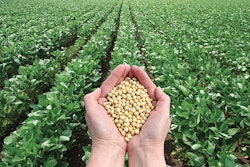
The gastrointestinal tract is populated by more than 400 different bacterial species that live in distinct sections of the tract. For instance, bacteria such as Lactobacillus, Enterococcus and Streptococcus dominate the upper tract from crop to small intestine. In the hindgut (ceca), however, 68 percent of the microbiota is represented by the genus Clostridacea.
Gut bacteria ferment simple carbohydrates and produce volatile fatty acids such as acetic, butyric and propionic acid. These acids serve as an energy source for epithelial cells, promoting digestion, and nutrient absorption. To ensure that a bird’s digestive tract functions and develops properly, it is essential to maintain the correct balance of microbial populations in the gut. Once achieved, birds can feed, grow and develop healthily.
A healthy monogastric gut maintains homeostasis, prevents infectious diseases, and provides energy and immunity. In contrast, poor gut health can lead to sub-clinical issues — or clinical disease outbreaks — that cause physiological stress to the animal and result in reduced performance and welfare.
Read on to learn more about seven feed additives that can improve poultry gut health.
1. Protease + adaptive direct-fed microbial
This combination works to improve gut barrier strength through tight junctions, enhance protein digestibility, amino acid utilization and fiber-bound nutrient release — as well as positively affect microbiome function. Studies show improved liveability, average daily gain and feed conversion ratio in grower/finisher pigs.
2. Phytase
Phytate binds protein in the upper gastrointestinal tract, making it unavailable to the animal, resulting in increased acid and pepsin production in the stomach. As the stomach empties, increased acidity damages the gut absorptive surface and requires more buffering through the release of sodium bicarbonate, negatively affecting gut function. Phytase breaks it down before it binds to the protein, avoiding the anti-nutritive effects of phytate and improving nutrient uptake for a better functioning gut.
3. Probiotics
Animals are shown to overcome heat stress and increase performance during the summer with the use of live yeast. The live yeast, which also improves fiber digestibility, promotes the production of fibriolitic bacteria, influencing the production of short-chain fatty acids.
4. Beta glucans
When purified or included in mannan-oligosaccharides, they can increase the gene expression of mRNA to produce the proteins composing of tight junctions. This provides better integrity of the tight junctions, with less leaky gut and drier litter.
5. Mannan-oligosaccharides
Mannan-oligosaccharides bind gram-negative bacteria, like E.coli or Salmonella, and gram-positive bacteria like Clostridium, better balancing the gut microbiota and improving feed efficiency.
6. Pronutrients
These natural micro-ingredients act on specific cells by binding receptors that induce gene transcription. This activation leads to an increase in the RNA-protein translation rate and specific functional proteins are synthesized in the ribosomes with different effects depending on its target cell. For example, if these are enterocytes, the intestinal epithelium will regenerate faster, improving nutrient absorption while preventing micro-organism growth.
7. Tannins
Tannins are bioactive plant extracts that can display a wide range of biological activities, contribute to improved gut health and offer an alternative to antibiotic growth promoters (AGPs). Low concentrations of several tannin sources have been shown to improve health status, nutrition and performance in monogastrics.


















